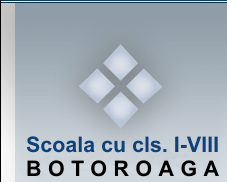

SCOALA CU CLASELE I-VIII BOTOROAGA
SCHOOL MAGAZINE

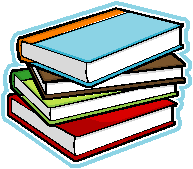

- 2007-
Monarchy of the United Kingdom
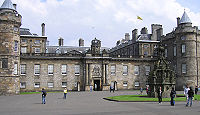
_ The monarchy of the United Kingdom, or the British monarchy, is a system of government in which a hereditary monarch is the sovereign of the United Kingdom and its overseas territories, and holds the constitutional position of head of state. According to convention her powers are exercised upon the advice of her prime minister. She does however possess certain reserve powers which she may exercise at her own discretion. The present monarch is Elizabeth II, who has reigned since February 6, 1952. The heir apparent is her eldest son, Charles, Prince of Wales. Along with the Queen's husband and consort, Prince Philip, Duke of Edinburgh, they undertake various public duties in accordance with their positions.
The current monarchy has its beginnings among the petty kingdoms of early medieval Britain. By the year 1000, these had resolved into the kingdoms of England and Scotland. Beginning in 1603, when the Scottish king inherited the English throne, both kingdoms were ruled by a single monarch, and in 1707 the kingdoms were merged to create the Kingdom of Great Britain and, essentially, the monarchy of the United Kingdom today.
The British monarch is Head of the Commonwealth and, besides reigning in the United Kingdom, separately serves as head of state for each of fifteen other Commonwealth countries. This developed from the former colonial relationship of these countries to Britain, but they are now independent and the monarchy of each is legally distinct.
_ International and domestic aspects
_Fifteen states within the 53-member Commonwealth of Nations, made up of former territories of the British Empire, are in a personal union relationship with the United Kingdom; these sixteen countries that share the same monarch are known as the Commonwealth realms. Despite having the same person as their respective national monarch, each of the Commonwealth realms is sovereign and independent of the others.[6]
Succession
 Succession is governed by several enactments, the most important of which are the Bill of Rights 1689 and Act of Settlement 1701. The rules for succession are not fixed, but may be changed by an Act of Parliament.Succession is according to the rules of male-preference cognatic primogeniture, under which sons inherit before daughters, and elder children inherit before younger ones of the same sex. The Act of Settlement, however, restricts the succession to the natural (i.e. non-adopted) legitimate descendants of Sophia, Electress of Hanover (1630–1714), a granddaughter of James I.
Succession is governed by several enactments, the most important of which are the Bill of Rights 1689 and Act of Settlement 1701. The rules for succession are not fixed, but may be changed by an Act of Parliament.Succession is according to the rules of male-preference cognatic primogeniture, under which sons inherit before daughters, and elder children inherit before younger ones of the same sex. The Act of Settlement, however, restricts the succession to the natural (i.e. non-adopted) legitimate descendants of Sophia, Electress of Hanover (1630–1714), a granddaughter of James I.
The Bill of Rights and Act of Settlement also include certain religious restrictions, which were imposed because of the English people's mistrust of Roman Catholicism during the late seventeenth century. Most importantly, only individuals who are Protestants at the time of the succession may inherit the Crown. Moreover, a person who has at any time professed Roman Catholicism, or has ever married a Roman Catholic, is also prohibited from succeeding. One who is thus disabled from inheriting the Crown is deemed "naturally dead" for succession purposes; the disqualifications do not extend to the individual's descendants. In recent years, there have been some efforts to remove the religious restrictions (especially the specific rules relating to Roman Catholicism), but the provisions remain in effect.
Upon a "demise in the Crown" (the death of a Sovereign) his or her heir immediately and automatically succeeds, without any need for confirmation or further ceremony. (Hence arises the phrase "The King is dead. Long live the King!") Nevertheless, it is customary for the accession of the Sovereign to be publicly proclaimed by an Accession Council that meets at St. James's Palace. After an appropriate period of mourning has passed, the Sovereign is also crowned in Westminster Abbey, normally by the Archbishop of Canterbury. A coronation is not necessary for a Sovereign to reign; for example, Edward VIII was never crowned, yet was undoubtedly king during his short reign.
After an individual ascends the Throne, he or she continues to reign until death. There is no provision for a monarch to unilaterally abdicate; the only monarch to voluntarily abdicate, Edward VIII (1936), did so only with the authorisation of a special Act of Parliament (His Majesty's Declaration of Abdication Act 1936). Historically, however, numerous reigns ended due to irregular or extralegal procedures; several monarchs have been killed, deposed, or forced to abdicate, chiefly during the fourteenth and fifteenth centuries. The last monarch involuntarily removed from power was James II, who fled the realm in 1688 during the Glorious Revolution; Parliament deemed him to have abdicated.
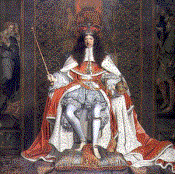 Regency
Regency
Under the Regency Act 1937 and Regency Act 1953, the powers of a monarch who has not reached the age of eighteen, or of a monarch who is physically or mentally incapacitated, must be exercised by a regent. A physical or mental incapacity must be certified by at least three of the following people: the Sovereign's spouse, the Lord Speaker, the Speaker of the House of Commons, the Lord Chief Justice of England and Wales, and the Master of the Rolls. The declaration of three or more of the same persons is also necessary to terminate the regency and to allow the monarch to resume power.
When a Regency is necessary, the next qualified individual in the line of succession becomes Regent; no special parliamentary vote or other confirmation procedure is necessary. The Regent must be aged at least twenty-one years (eighteen years in the case of the heir apparent or heir presumptive), be a British citizen, and be domiciled in the United Kingdom. However, special provisions were made for Queen Elizabeth II by the Regency Act 1953, which states that The Duke of Edinburgh (the Queen's husband) may act as Regent in certain circumstances. The only individual to have acted as Regent was the future George IV, who took over the government of the realm whilst his father, George III, was considered insane (1811–1820).
During a temporary physical infirmity or an absence from the kingdom, the Sovereign may temporarily delegate his or her functions to Counsellors of State, the Sovereign's spouse and the first four qualified people in the line of succession. The qualifications for Counsellors of State are the same as those for Regents. The present Counsellors of State are: The Duke of Edinburgh, The Prince of Wales, Prince William of Wales, Prince Henry of Wales and The Duke of York.
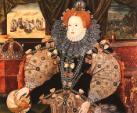 Royal Prerogative
Royal Prerogative
The executive authority of the government is theoretically and nominally vested in the Sovereign; the powers that belong to the Crown are collectively known as the Royal Prerogative. The Royal Prerogative includes many powers (such as the powers to dissolve Parliament, regulate the civil service, issue passports, make treaties or send ambassadors) as well as certain duties (such as the duties to defend the realm and to maintain the Queen's peace). As the British monarchy is a constitutional one, however, the monarch acts within the constraints of convention and precedent, exercising the Royal Prerogative on the advice of ministers. The Prime Minister and ministers are, in turn, accountable to the democratically elected House of Commons and, through it, to the people. Parliamentary approval is not required for the exercise of the Royal Prerogative; moreover, the Consent of the Crown must be obtained before either House may even debate a bill affecting the Sovereign's prerogatives or interests. Although the Royal Prerogative is extensive, it is not unlimited. For example, the monarch does not have the prerogative to impose and collect new taxes; such an action requires the authorisation of an Act of Parliament.
According to a parliamentary report, "The Crown cannot invent new prerogative powers."[11] On the contrary, many of the Crown prerogatives have been permanently transferred to Parliament in the past, and more may be in the future.
_The Sovereign is one of the three components of Parliament; the others are the House of Lords and the House of Commons. It is the prerogative of the monarch to summon, prorogue and dissolve Parliament. Each parliamentary session begins with the monarch's summons. The new parliamentary session is marked by the State Opening of Parliament, during which the Sovereign reads the Speech from the Throne in the Chamber of the House of Lords, outlining the Government's legislative agenda. Prorogation usually occurs about one year after a session begins, and formally concludes the session. Dissolution ends a parliamentary term (which lasts a maximum of five years), and is followed by general elections for all seats in the House of Commons. These powers, however, are always exercised on the Prime Minister's advice. The timing of a dissolution is affected by a variety of factors; the Prime Minister normally chooses the most politically opportune moment for his or her party. The Sovereign may theoretically refuse a dissolution, but the circumstances under which such an action would be warranted are unclear.[12] (See Lascelles Principles.) No parliamentary term may last more than five years; at the end of this period, a dissolution is automatic under the Parliament Act 1911.
All laws are enacted in the monarch's name. The words "BE IT ENACTED by the Queen's [King's] most Excellent Majesty, by and with the advice and consent of the Lords Spiritual and Temporal, and Commons, in this present Parliament assembled, and by the authority of the same, as follows," known as the enacting formula, form a part of each Act of Parliament. Before a bill can become law, the Royal Assent (the monarch's approval) is required. The Sovereign may, in theory, either grant the Royal Assent (make the bill law) or withhold the Royal Assent (veto the bill). In practice, however, the Royal Assent is always granted; the last monarch to withhold Assent was Anne, who rejected a Scots militia bill in 1708.
The Royal Prerogative with respect to domestic affairs is extensive. The Crown is responsible for the appointment and dismissal of ministers, Privy Counsellors, members of various executive agencies and other officials. Effectively, however, the appointees are chosen by the Prime Minister, or, for less important offices, by other ministers. In addition, the monarch is the head or commander in chief of the Armed Forces (the British Army, the Royal Navy and the Royal Air Force). It is the Sovereign's prerogative to declare war, make peace and direct the actions of the military, although the Prime Minister holds de facto decision-making power over the British armed forces. Many of the Sovereign's prerogative powers are exercised through the Privy Council.
The Royal Prerogative, in addition, extends to foreign affairs. The Sovereign may negotiate and ratify treaties, alliances, and international agreements; no parliamentary approval is required. However, a treaty cannot alter the domestic laws of the United Kingdom; an Act of Parliament is necessary in such cases. The Sovereign also accredits British High Commissioners and ambassadors, and receives diplomats from foreign states. In addition, all British passports are issued in the monarch's name.
Furthermore, the Sovereign is deemed the fount of justice, and is responsible for rendering justice for all subjects. The Sovereign does not personally rule in judicial cases; instead, judicial functions are performed in his or her name. For instance, prosecutions are brought on the monarch's behalf, and courts derive their authority from the Crown. The common law holds that the Sovereign "can do no wrong"; the monarch cannot be prosecuted in his or her own courts for criminal offences. The Crown Proceedings Act 1947 allows civil lawsuits against the Crown in its public capacity (that is, lawsuits against the government); however, lawsuits against the monarch personally are not cognizable. The Sovereign also exercises the "prerogative of mercy," and may pardon offences against the Crown. Pardons may be awarded before, during, or after a trial.
Similarly, the monarch is also the fount of honour, or the source of all honours and dignities in the United Kingdom. Thus, the Crown creates all peerages, appoints members of the orders of chivalry, grants knighthoods and awards other honours. In practice, peerages and most other honours are granted on the advice of the Prime Minister. Some honours, however, are within the personal gift of the Sovereign, and are not granted on ministerial advice. Thus, the monarch alone appoints members of the Order of the Garter, the Order of the Thistle, the Royal Victorian Order and the Order of Merit.
Finally, the Sovereign is the Supreme Governor of the Church of England, the officially established church in England. As such, the monarch has the power to appoint archbishops and bishops. The Prime Minister, however, chooses the appointee, though he or she must select from a list of nominees prepared by the Crown Nominations Commission. The Crown's role in the Church of England is titular; the most senior clergyman, the Archbishop of Canterbury, is seen as the spiritual leader of the Church and of the worldwide Anglican Communion. The monarch is only an ordinary member, and not the head or leader, of the Church of Scotland; however, he or she does hold the power to appoint the Lord High Commissioner to the Church's General Assembly. The Sovereign plays no formal role in the Church in Wales and the Church of Ireland, neither of which is an established church.
The Great Seal of the Realm is the device used to authenticate important official documents, including letters patent, proclamations and writs of election. The Great Seal of the Realm is in the custody of the Lord Chancellor. For matters relating exclusively to Scotland or Northern Ireland, the Great Seal of Scotland or the Great Seal of Northern Ireland is used, as the case may be.
The monarch also has the power to claim any sturgeons, porpoises, whales or dolphins that are either washed ashore or captured within 3 miles (5 km) of the British coast. This power comes from a statute from King Edward II in 1324. Today, if you purchase a sturgeon, you still request the honour as an act of loyalty to the crown
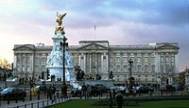 Residences
Residences
_ The Sovereign's primary official residence is Buckingham Palace in the City of Westminster. Buckingham Palace is the site of most state banquets, investitures, royal christenings, and other ceremonies. Moreover, visiting heads of state usually reside in Buckingham Palace. Another principal residence is Windsor Castle, the largest occupied castle in the world. Windsor Castle, located in Windsor, Berkshire, is used principally as a weekend retreat; the monarch also resides there during the Royal Ascot, an annual race meeting that forms a major part of the social calendar. The Sovereign's principal official residence in Scotland is the Palace of Holyroodhouse, more commonly called Holyrood Palace, in Edinburgh. The monarch stays at Holyrood Palace for at least one week each year, and when visiting Scotland on state occasions.
_ There also exist a number of other palaces not used as residences by the monarch. The Palace of Westminster was originally the Sovereign's primary residence until 1530; although it is still officially a royal palace, it serves as the home to both Houses of Parliament. Thereafter, the Sovereign's principal London residence was the Palace of Whitehall, which was destroyed by fire in 1698, to be replaced by St. James's Palace. Although it was replaced as the monarch's primary residence by Buckingham Palace in 1837, St James's is still used for various official functions. For example, foreign ambassadors are accredited to the Court of St. James's, and the Palace is the site of the meeting of the Accession Council. However, St James's Palace is not one of the Sovereign's official residences; instead, it is used by other members of the Royal Family. Other residences used by the Royal Family include Clarence House (presently the home of the heir-apparent, The Prince of Wales) and Kensington Palace.
_ The aforementioned residences belong to the Crown; they are held in trust for future rulers, and cannot be sold by the monarch. However, the monarch does own certain homes in a private capacity. Sandringham House, a privately owned country house near the village of Sandringham, Norfolk, is typically used from Christmas to the end of January. Similarly, during parts of August and September, the monarch resides in Balmoral Castle, a privately owned castle in Aberdeenshire in Scotland.
King Arthur
 King Arthur was a fabled British leader and a prominent figure in Britain's legendary history. A real individual may have been the inspiration of the legend, but any core of history is deeply submerged in the later fictional narratives of Arthur. In these he appears as the ideal of kingship both in war and peace; even in modern times he has been ranked as one of the 100 Greatest Britons of all time. Over time, the stories of King Arthur have captured such widespread interest that he is no longer identified as the legendary hero of a single nation. Countless new legends, stories, revisions, books, and films have been produced in Europe and the United States that unabashedly enlarge on and expand the fictional accounts of King Arthur.
King Arthur was a fabled British leader and a prominent figure in Britain's legendary history. A real individual may have been the inspiration of the legend, but any core of history is deeply submerged in the later fictional narratives of Arthur. In these he appears as the ideal of kingship both in war and peace; even in modern times he has been ranked as one of the 100 Greatest Britons of all time. Over time, the stories of King Arthur have captured such widespread interest that he is no longer identified as the legendary hero of a single nation. Countless new legends, stories, revisions, books, and films have been produced in Europe and the United States that unabashedly enlarge on and expand the fictional accounts of King Arthur.
The central themes of the Arthurian cycle vary depending on which texts are examined. However, they include the establishment of Arthur as king through the sword in the stone episode, the advice of the wizard Merlin, the establishment of the fellowship of knights known as the Round Table and the associated code of chivalry, the defence of Britain against the Saxons, numerous magical adventures associated with particular knights, notably Kay, Gawain, Lancelot, Percival and Galahad, the enmity of Arthur's half-sister Morgan le Fay, the quest for the Holy Grail, the adultery of Lancelot and Queen Guinevee, the final battle with Mordred, and the legend of Arthur's future return. The magical sword Excalibur, the castle Camelot and the Lady of the Lake also play pivotal roles.
__ Arthur's swords
_In the early Welsh sources, Arthur's sword is called Caledfwlch (IPA: /kɑl.'ɛd.vuːlx/) and Kaledvoulc'h in Breton, and is likely related to the phonetically similar Caladbolg (IPA: /'kɑl.ɑd.vɒlɣ/), a sword borne by several figures from Irish mythology. The first two syllables of both derive from Celtic *kaleto-, "hard". Geoffrey of Monmouth calls Arthur's sword Caliburnus. In early French sources this becomes Escalibor, and finally the familiar Excalibur.
_ In Robert de Boron's Merlin, Arthur obtained the throne by pulling a sword from a stone. In this account, this act could not be performed except by "the true king," meaning the divinely appointed king or true heir of Uther Pendragon. This sword is thought by many to be the famous Excalibur and the identity is made explicit in the later so-called Vulgate Merlin Continuation, part of the Lancelot-Grail cycle. However, in what is sometimes called the Post-Vulgate Merlin, Excalibur was given to Arthur by the Lady of the Lake sometime after he began to reign. According to many sources, Arthur broke the sword pulled from the stone while fighting King Pellinore, and thus Merlin took him to retrieve Excalibur from the lake (as cited in many novels including Howard Pyle's King Arthur and His Knights, King Arthur and the Legend of Camelot, and indeed most modern Arthurian literature). In this Post-Vulgate version, the sword's blade could slice through anything, including steel, and its sheath made the wearer invincible in that the wearer could not die so long as they bore the scabbard.
Some stories say that Arthur did indeed pull the sword from the stone (Excalibur), giving him the right to be king, but accidentally killed a fellow knight with it and cast it away. Merlin told him to undertake a quest to find another blade, and it was then that Arthur received his sword from the hand in the water, and named it Excalibur, after his original sword. The Alliterative Morte Arthure, a Middle English poem, gives mention of Clarent, a sword of peace meant for knighting and ceremonies as opposed to battle, which is stolen and then used to kill Arthur.
Mythological king
_A mythological king is an archetype in mythology. A king is considered a "mythological king" if they are included and described in the culture's mythology. Unlike a fictional king, aspects of their lives may have been real and legendary, or that the culture (through legend and story telling) believed to be real. In the myth, the legends that surround any historical truth might have evolved into symbols of "kinship" and leadership, and expanded with descriptions of spiritual, supernatural or magical chain of events. For example, in legend the king may have magical weapons and fight dragons or other mythological beasts. Their archetypical role is usually to protect the people and serve the people.
_ Many authors throughout history have written stories and poems about the Arthurian legend. Each story builds on its predecessor, and the overall image and character of King Arthur remains consistent. The king of Camelot is the perfect example of a chivalrous king and knight. He is also often shown as an equal to his knights rather than a ruler. In Tennyson’s Idylls of the King, Arthur is depicted as the perfect king in his rule as well as his marriage.[17] Even when his wife, Guinevere, commits adultery with Arthur’s best knight, Lancelot, and destroys his court, he is able to forgive her for the sins she committed. Even as a young king in the story “Sir Gawain and the Green Knight,” Arthur has the image of the perfect, selfless king. During the feast, he refuses to eat until all of his subjects have taken their fill. Also, when the Green Knight confronts him and his court, Arthur accepts the deadly challenge until Gawain insists he must bear it. At the end of Gawain’s quest, Arthur and his knights decide to wear the green girdle, which for Gawain represents his failure and weakness. Although he is their king, he still sees himself an equal to his knights and wears the girdle as a sign of their equality.
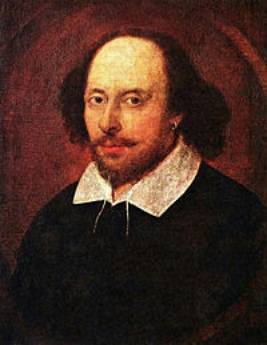
_ _ William Shakespeare (baptised 26 April 1564 – 23 April 1616) was an English poet and playwright, now widely regarded as the greatest writer in the English language and the world's preeminent dramatist. He is often called England's national poet and the "Bard of Avon" (or simply "The Bard"). His surviving works consist of 38 plays,154 sonnets, two long narrative poems, and several other poems. His plays have been translated into every major living language and are performed more often than those of any other playwright
Shakespeare was born and raised in Stratford-upon-Avon. At the age of 18 he married Anne Hathaway, who bore him three children: Susanna, and twins Hamnet and Judith. Between 1585 and 1592 he began a successful career in London as an actor, writer, and part-owner of the playing company the Lord Chamberlain's Men, later known as the King's Men. He appears to have retired to Stratford around 1613, where he died three years later. Few records of Shakespeare's private life survive, and there has been considerable speculation about such matters as his sexuality, religious beliefs, and whether the works attributed to him were written by others.
_ Shakespeare produced most of his known work between 1590 and 1613. His early plays were mainly comedies and histories, genres he raised to the peak of sophistication and artistry by the end of the sixteenth century. Next he wrote mainly tragedies until about 1608, producing plays, such as Hamlet, King Lear, and Macbeth, considered some of the finest in the English language. In his last phase, he wrote tragicomedies and collaborated with other playwrights. Many of his plays were published in editions of varying quality and accuracy during his lifetime, and in 1623, two of his former theatrical colleagues published the First Folio, a collected edition of his dramatic works that included all but two of the plays now recognised as Shakespeare's.
Shakespeare was a respected poet and playwright in his own day, but his reputation did not rise to its present heights until the nineteenth century. The Romantics, in particular, acclaimed Shakespeare's genius, and the Victorians hero-worshipped Shakespeare with a reverence that George Bernard Shaw called "bardolatry". In the twentieth century, his work was repeatedly adopted and rediscovered by new movements in scholarship and performance. His plays remain highly popular today and are consistently performed and reinterpreted in diverse cultural and political contexts throughout the world.
Early life
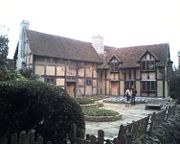 John Shakespeare's house in Stratford-upon-Avon.
John Shakespeare's house in Stratford-upon-Avon.
William Shakespeare was the son of John Shakespeare, a successful glover and alderman originally from Snitterfield, and Mary Arden, the daughter of an affluent landowning farmer. He was born in Stratford-upon-Avon and baptised on 26 April 1564. His unknown birthday is traditionally observed on 23 April, St George's Day. This date, which can be traced back to an eighteenth-century scholar's mistake, has proved appealing because Shakespeare died on 23 April 1616. He was the third child of eight and the eldest surviving son.
Later years and death
_ After 1606–7, Shakespeare wrote fewer plays, and none are attributed to him after 1613. His last three plays were collaborations, probably with John Fletcher, who succeeded him as the house playwright for the King’s Men.
_ Rowe was the first biographer to pass down the tradition that Shakespeare retired to Stratford some years before his death; but retirement from all work was uncommon at that time, and Shakespeare continued to visit London. In 1612, he was called as a witness in a court case concerning the marriage settlement of Mountjoy's daughter, Mary. In March 1613, he bought a gatehouse in the Blackfriars priory; and from November 1614, he was in London for several weeks with his son-in-law, John Hall. Shakespeare died on 23 April 1616, and was survived by his wife and two daughters. Susanna had married a physician, John Hall, in 1607, and Judith had married Thomas Quiney, a vintner, two months before Shakespeare’s death.
Plays
_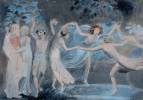 Scholars have often noted four periods in Shakespeare's writing career. Until the mid-1590s, he wrote mainly comedies influenced by Roman and Italian models and history plays in the popular chronicle tradition. His second period began in about 1595 with the tragedy Romeo and Juliet and ended with the tragedy of Julius Caesar in 1599. During this time, he wrote what are considered his greatest comedies and histories. From about 1600 to about 1608, his "tragic period", Shakespeare wrote mostly tragedies, and from about 1608 to 1613, mainly tragicomedies, also called romances.
Scholars have often noted four periods in Shakespeare's writing career. Until the mid-1590s, he wrote mainly comedies influenced by Roman and Italian models and history plays in the popular chronicle tradition. His second period began in about 1595 with the tragedy Romeo and Juliet and ended with the tragedy of Julius Caesar in 1599. During this time, he wrote what are considered his greatest comedies and histories. From about 1600 to about 1608, his "tragic period", Shakespeare wrote mostly tragedies, and from about 1608 to 1613, mainly tragicomedies, also called romances.
Shakespeare's early classical and Italianate comedies, containing tight double plots and precise comic sequences, give way in the mid-1590s to the romantic atmosphere of his greatest comedies.A Midsummer Night's Dream is a witty mixture of romance, fairy magic, and comic low-life scenes. Shakespeare's next comedy, the equally romantic The Merchant of Venice, contains a portrayal of the vengeful Jewish moneylender Shylock which reflected Elizabethan views but may appear racist to modern audiences. The wit and wordplay of Much Ado About Nothing,[78] the charming rural setting of As You Like It, and the lively merrymaking of Twelfth Night complete Shakespeare's sequence of great comedies. After the lyrical Richard II, written almost entirely in verse, Shakespeare introduced prose comedy into the histories of the late 1590s, Henry IV, parts I and 2, and Henry V. His characters become more complex and tender as he switches deftly between comic and serious scenes, prose and poetry, and achieves the narrative variety of his mature work. This period begins and ends with two tragedies: Romeo and Juliet, the famous romantic tragedy of sexually charged adolescence, love, and death;[81] and Julius Caesar—based on Sir Thomas North's 1579 translation of Plutarch's Parallel Lives—which introduced a new kind of drama. According to Shakespearean scholar James Shapiro, in Julius Caesar "the various strands of politics, character, inwardness, contemporary events, even Shakespeare's own reflections on the act of writing, began to infuse each other".
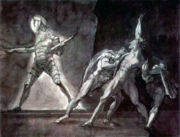
_ Shakespeare's so-called "tragic period" lasted from about 1600 to 1608, though he also wrote the so-called "problem plays" Measure for Measure, Troilus and Cressida, and All's Well That Ends Well during this time and had written tragedies before. Many critics believe that Shakespeare's greatest tragedies represent the peak of his art. The hero of the first, Hamlet, has probably been more discussed than any other Shakespearean character, especially for his famous soliloquy "To be or not to be; that is the question." Unlike the introverted Hamlet, whose fatal flaw is hesitation, the heroes of the tragedies that followed, Othello and King Lear, are undone by hasty errors of judgement. The plots of Shakespeare's tragedies often hinge on such fatal errors or flaws, which overturn order and destroy the hero and those he loves.[87] In Othello, the villain Iago stokes Othello's sexual jealousy to the point where he murders the innocent wife who loves him. In King Lear, the old king commits the tragic error of giving up his powers, triggering scenes which lead to the murder of his daughter and the torture and blinding of the Duke of Gloucester. According to the critic Frank Kermode, "the play offers neither its good characters nor its audience any relief from its cruelty". In Macbeth, the shortest and most compressed of Shakespeare's tragedies, uncontrollable ambition incites Macbeth and his wife, Lady Macbeth, to murder the rightful king and usurp the throne, until their own guilt destroys them in turn. In this play, Shakespeare adds a supernatural element to the tragic structure. His last major tragedies, Antony and Cleopatra and Coriolanus, contain some of Shakespeare's finest poetry and were considered his most successful tragedies by the poet and critic T. S. Eliot.
In his final period, Shakespeare turned to romance or tragicomedy and completed three more major plays: Cymbeline, The Winter's Tale and The Tempest, as well as the collaboration, Pericles, Prince of Tyre. Less bleak than the tragedies, these four plays are graver in tone than the comedies of the 1590s, but they end with reconciliation and the forgiveness of potentially tragic errors. Some commentators have seen this change in mood as evidence of a more serene view of life on Shakespeare's part, but it may merely reflect the theatrical fashion of the day. Shakespeare collaborated on two further surviving plays, Henry VIII and The Two Noble Kinsmen, probably with John Fletcher.
Style
Shakespeare's first plays were written in the conventional style of the day. He wrote them in a stylised language that does not always spring naturally from the needs of the characters or the drama. The poetry depends on extended, sometimes elaborate metaphors and conceits, and the language is often rhetorical—written for actors to declaim rather than speak. The grand speeches in Titus Andronicus, in the view of some critics, often hold up the action, for example; and the verse in Two Gentlemen of Verona has been described as stilted.
Soon, however, Shakespeare began to adapt the traditional styles to his own purposes. The opening soliloquy of Richard III has its roots in the self-declaration of Vice in medieval drama. At the same time, Richard’s vivid self-awareness looks forward to the soliloquies of Shakespeare's mature plays. No single play marks a change from the traditional to the freer style. Shakespeare combined the two throughout his career, with Romeo and Juliet perhaps the best example of the mixing of the styles. By the time of Romeo and Juliet, Richard II, and A Midsummer Night's Dream in the mid-1590s, Shakespeare had begun to write a more natural poetry. He increasingly tuned his metaphors and images to the needs of the drama itself.
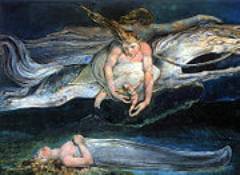
Shakespeare's standard poetic form was blank verse, composed in iambic pentameter. In practice, this meant that his verse was usually unrhymed and consisted of ten syllables to a line, spoken with a stress on every second syllable. The blank verse of his early plays is quite different from that of his later ones. It is often beautiful, but its sentences tend to start, pause, and finish at the end of lines, with the risk of monotony. Once Shakespeare mastered traditional blank verse, he began to interrupt and vary its flow. This technique releases the new power and flexibility of the poetry in plays such as Julius Caesar and Hamlet. Shakespeare uses it, for example, to convey the turmoil in Hamlet's mind:
Sir, in my heart there was a kind of fighting
That would not let me sleep. Methought I lay
Worse than the mutines in the bilboes. Rashly—
And prais'd be rashness for it—let us know
Our indiscretion sometimes serves us well...
After Hamlet, Shakespeare varied his poetic style further, particularly in the more emotional passages of the late tragedies. The literary critic A. C. Bradley described this style as "more concentrated, rapid, varied, and, in construction, less regular, not seldom twisted or elliptical". In the last phase of his career, Shakespeare adopted many techniques to achieve these effects. These included run-on lines, irregular pauses and stops, and extreme variations in sentence structure and length. In Macbeth, for example, the language darts from one unrelated metaphor or simile to another: "was the hope drunk/ Wherein you dressed yourself?" (1.7.35–38); "...pity, like a naked new-born babe/ Striding the blast, or heaven's cherubim, hors'd/ Upon the sightless couriers of the air..." (1.7.21–25). The listener is challenged to complete the sense. The late romances, with their shifts in time and surprising turns of plot, inspired a last poetic style in which long and short sentences are set against one another, clauses are piled up, subject and object are reversed, and words are omitted, creating an effect of spontaneity.
Shakespeare's poetic genius was allied with a practical sense of the theatre. Like all playwrights of the time, Shakespeare dramatised stories from sources such as Petrarch and Holinshed. He reshaped each plot to create several centres of interest and show as many sides of a narrative to the audience as possible. This strength of design ensures that a Shakespeare play can survive translation, cutting and wide interpretation without loss to its core drama.As Shakespeare’s mastery grew, he gave his characters clearer and more varied motivations and distinctive patterns of speech. He preserved aspects of his earlier style in the later plays, however. In his late romances, he deliberately returned to a more artificial style, which emphasised the illusion of theatre
English in the World
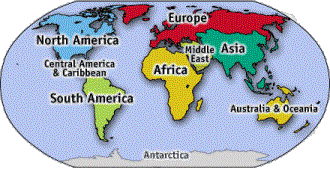
According to research by the British Council, "English has official* or special status in at least seventy-five countries with a total population of over two billion. English is spoken as a native* language by around 375 million and as a second language* by around 375 million speakers in the world. Speakers of English as a second language will soon outnumber those who speak it as a first language. Around 750 million people are believed to speak English as a foreign language*. One out of four of the world's population speak English to some level of competence. Demand from the other three-quarters is increasing."
What people use English for
The British Council says "English is the main language of books, newspapers, airports and air-traffic control, international business and academic conferences, science, technology, diplomacy, sport, international competitions, pop music and advertising.
Over two-thirds of the world's scientists read in English. Three quarters of the world's mail is written in English. Eighty per cent of the world's electronically stored information is in English. Of the estimated forty million users of the Internet, some eighty per cent communicate in English, but this is expected to decrease to forty per cent as speakers of other languages get online."
What our students say about English
"English is an easy language. There are no accents, the tenses of verbs are simplified and the adjectives are invariable", says Gustavo O. after three years studying it at school. Anaelle S. agrees with him but she finds the many different ways words are pronounced and the spelling difficult to cope with. Nicolas de F. finds it interesting and cool because through it he can understand many films and songs. "You need English to travel around the world - it's a language almost everybody understands - so it's easier to communicate with people from different cultures", says Daniela K. . According to Aldebaran D., "you must speak English if you want a good job especially if you want to work with computers".
The Growth and Expansion of English
English is part of the Germanic branch of the Indo-European family of languages. By year 1000, the English language consisted of approximately 40 000 words. Nowadays, the number has grown to more than 500 000. If we calculate the average of words created per century, this comes to 46 000. A great number of words found in the English vocabulary was borrowed from Latin, French, Low German, and the Scandinavian languages. We also know that some periods were more fertile than others: invasions, contact with other cultures, inventions, technological progress, music, fashion are some of the factors which have helped to enrich the language.
British colonialism in the 19th century and American capitalism and technological progress in the 20th century were undoubtely the main causes for the spread of English throughout the world.
From around 1750 to 1950 the British Empire covered about a quarter of the globe. It was one of the most powerful empires the world has ever known. The colonies gradually freed themselves but about fifty countries chose to keep a connection with Britain by belonging to the The British Commonwealth. English is spoken all over the Commonwealth either as a native or an official language, and the British monarch is the symbolic head of the association.
The USA has played a leading role in most domains for the last hundred years. At the end of the 19th century and first quarter of the 20th, it welcomed millions of European immigrants who had fled their countries ravaged by war, poverty or famine. This labour force strenghtened American industries and development. The Hollywood film industry also attracted many foreign artists in quest of fame and fortune and the number of American films produced every year soon flooded the market. Before the Treaty of Versailles(1919), which ended the First World War between Germany and the Allies, diplomacy was conducted in French. However, President Wilson succeeded in having the treaty in English as well. Since then, English started being used in diplomacy and gradually in economic relations and the media. During the II World War, America intervened both militarily and economically to save Europe from chaos. From then onwards, the United States have consolidated their cultural, economical and technological power: inventions, rock and roll, the first man on the moon, the revolution of the Internet, the country's growing prosperity and commercial aggressiveness have contributed to the further expansion and importance of English in the world today.
Influences
The Oxford English Dictionary's new edition will come out in 2010.The Chief Editor of OED , John Simpson, has issued an appeal for new words: 'There is no longer one English - there are many Englishes. Words are flooding into the language from all corners of the world'.
The "internationalisation" of English may bring new possibilities for native speakers of the language :
In his MA thesis,"The Spread of English and Its Appropriation", Daniel Spichtinger quotes MCabe "...whereas for two centuries we exported our language and our customs in hot pursuit of...fresh markets, we now find that our language and our customs are returned to us but altered so that they can be used by others...so that our own language and culture discover new possibilities, fresh contradictions." This may refer to writers from Africa, Asia and former colonies who have used and appropriated the English language for their own purposes but whose usage of English has also made their works accessible to a wider audience. For Kachru, "once English aquires a new identity through creative writing, the language is liberated from its colonial past."